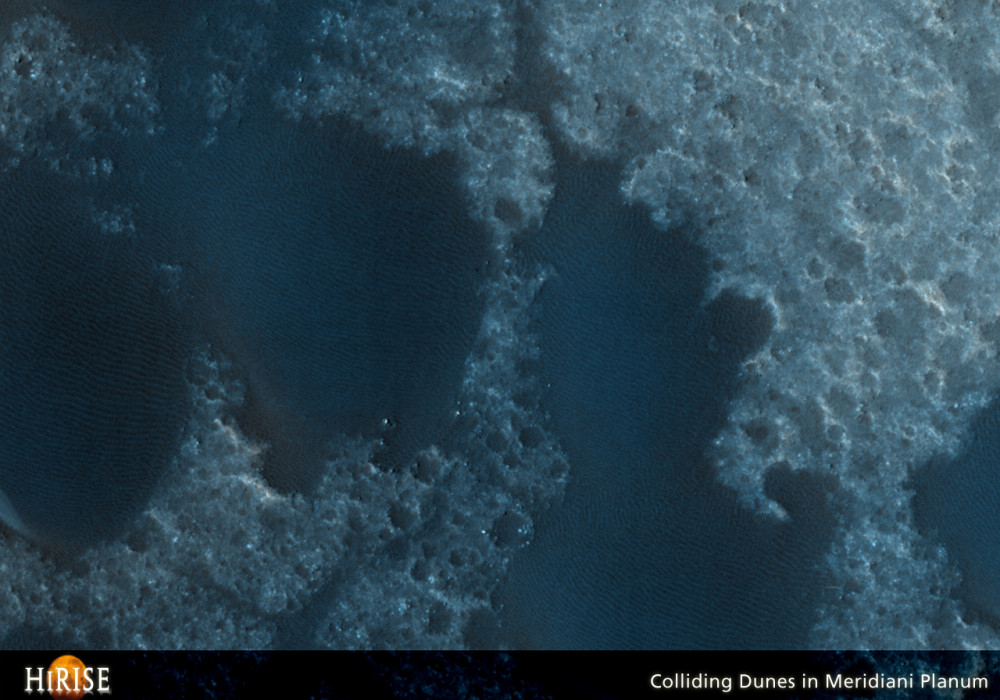This observation shows a variety of wind-related features near the equator of Mars in northern Meridiani Planum.
Two distinct types of dark sand dunes are visible in this picture. The isolated dunes near the edge of the dune field are called barchans, and their shapes can be used to determine the wind direction. These barchans are about 200 meters (656 feet) across and display steep edges on their southwest sides, indicating that they are driven by northeasterly winds. This agrees with the orientation of the bright wind streak issuing from the crater at the top right of the picture, formed from bright dust eroding from the crater interior.
Towards the middle of the dune field, the shape of the dunes alters to the second type of dunes, known as “transverse” dunes. These are long ridges of sand that are oriented perpendicular to the prevailing wind direction, and tend to form where there is an abundant supply of sand. A closeup of the transition zone suggests that the individual barchans first merge into groups of two or three before the groups merge to form ridges.
Several indications suggest that the sand here is on the move. Sand fills small pits and polygonal fractures in the bedrock, indicating recent sand movement between the dunes. The transitioning dune types and the presence of outliers (dunes that form away from the main dune field) both suggest possible dune migration.
HiRISE will continue to monitor areas such as this over time, in order to quantify the rate of sand movement on Mars.Written by: Circe Verba and Rose Hayward (23 January 2008)
More info and image formats at http://hirise.lpl.arizona.edu/PSP_006254_1885
Image: NASA/JPL/University of Arizona
